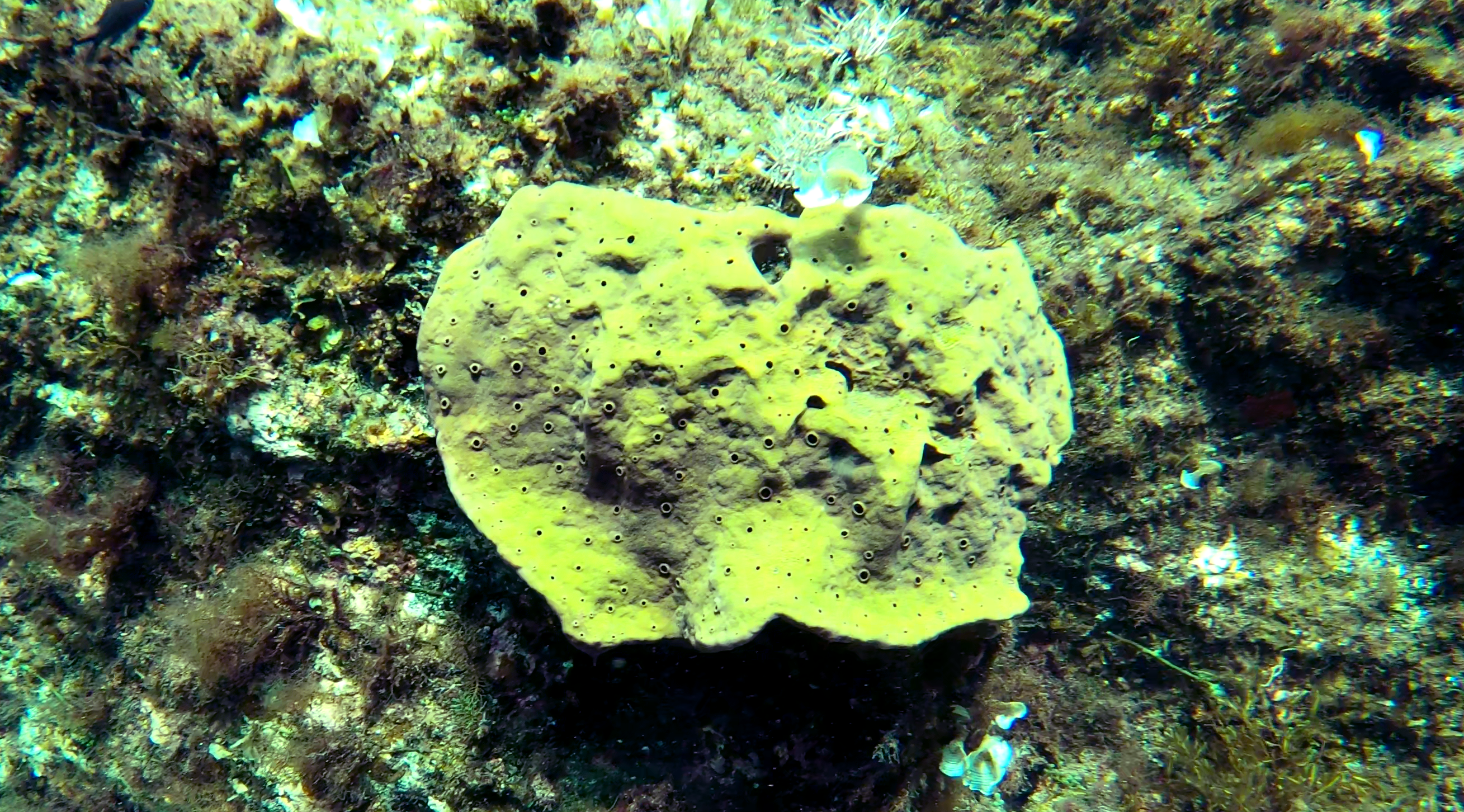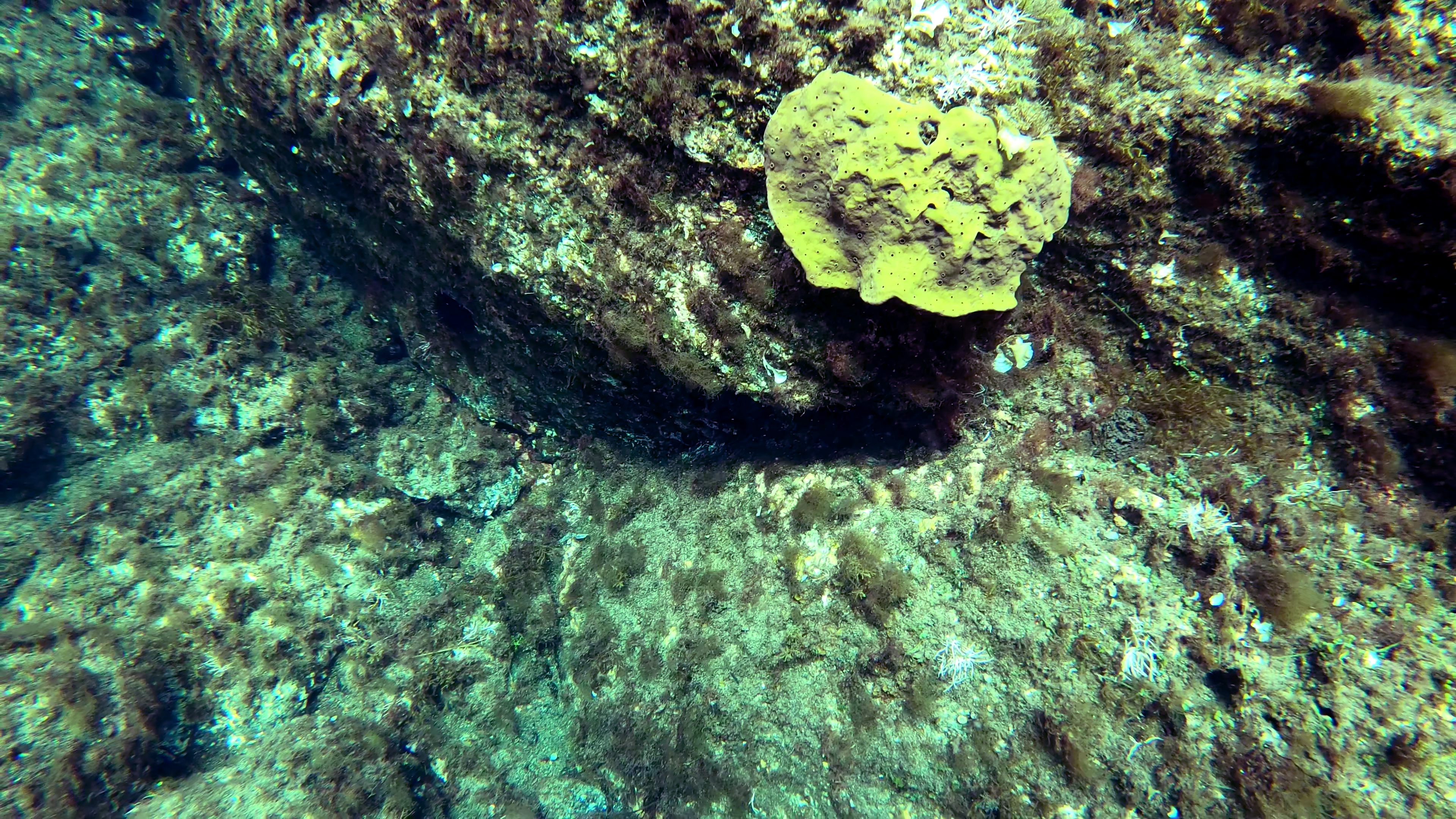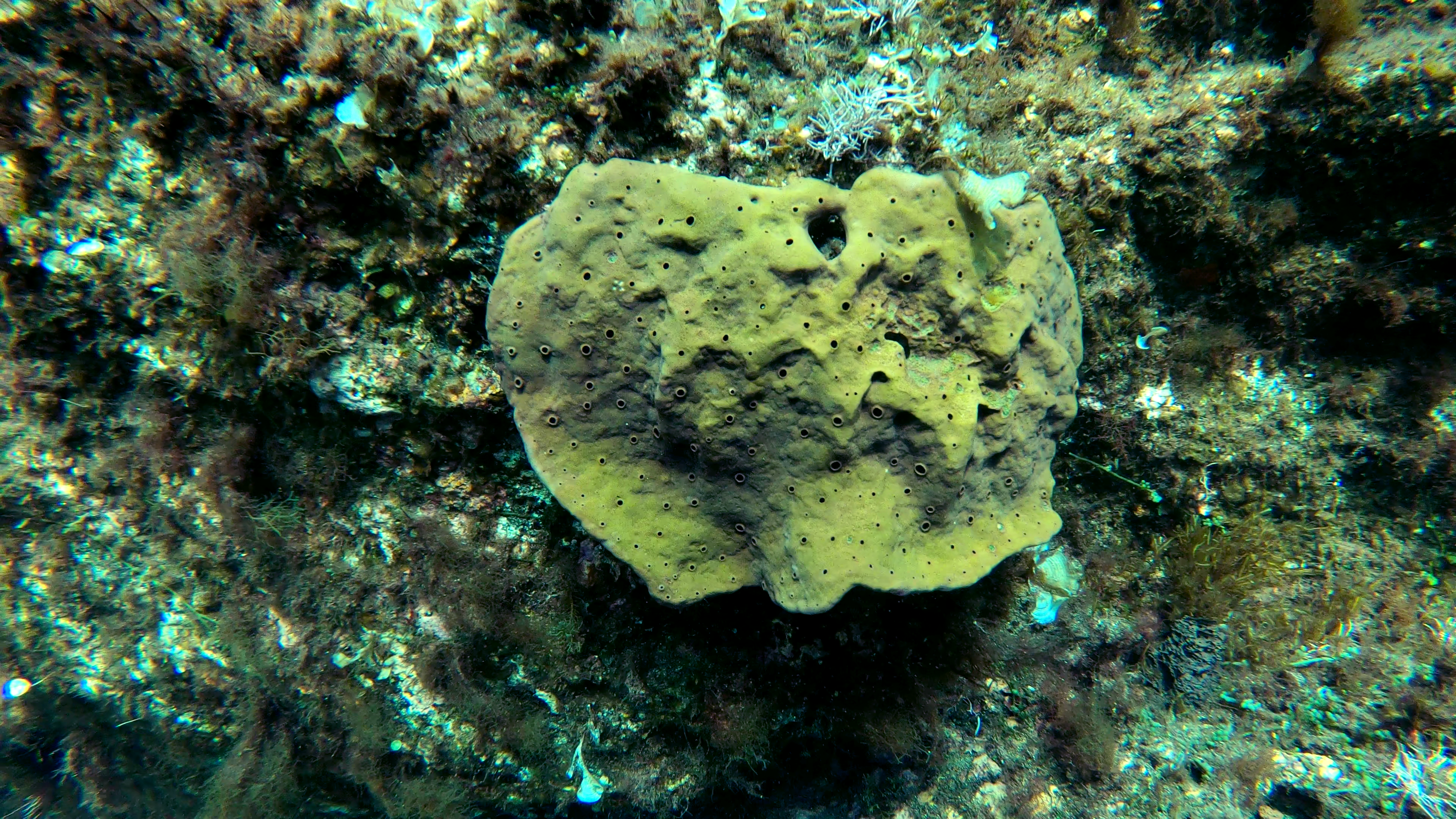Demosponge - Demospongiae
Demosponges are the most diverse class in the phylum Porifera. They include 76.2% of all species of sponges with nearly 8,800 species worldwide (World Porifera Database). Sponges, contrary to what one might think at first sight, are very simple multicellular animal organisms very similar in shape and appearance to plant organisms. There are no apparatus in the sponges and there is no trace of a nervous system. They are sponges with a soft body that covers a hard, often massive skeleton made of calcium carbonate, either aragonite or calcite. They are predominantly leuconoid in structure. Their “skeleton” are made of spicules consisting of fibers of the protein spongin, the mineral silica, or both. Where spicules of silica are present, they have a different shape from those in the otherwise similar glass sponges.
Some species, in particular from the Antarctic, obtain the silica for spicule building from the ingestion of siliceous diatoms. Some species are brightly colored, with great variety in body shape; the largest species are over 1 m. across. They reproduce both sexually and asexually. Because of many species’ long life span (500–1,000 years) it is thought that analysis of the aragonite skeletons of these sponges could extend data regarding ocean temperature, salinity, and other variables farther into the past than has been previously possible. Their dense skeletons are deposited in an organized chronological manner, in concentric layers or bands. The layered skeletons look similar to reef corals. Therefore, demosponges are also called coralline sponges. spugna cornea demosponge

Sponges of the phylum Porifera are a basal Metazoa (animal) clade as a sister of the Diploblasts. They are multicellular organisms that have bodies full of pores and channels allowing water to circulate through them, consisting of jelly-like mesohyl sandwiched between two thin layers of cells. The branch of zoology that studies sponges is known as spongiology. Sponges have unspecialized cells that can transform into other types and that often migrate between the main cell layers and the mesohyl in the process. Sponges do not have nervous, digestive or circulatory systems. Instead, most rely on maintaining a constant water flow through their bodies to obtain food and oxygen and to remove wastes. Sponges were first to branch off the evolutionary tree from the common ancestor of all animals, making them the sister group of all other animals Sponges are similar to other animals in that they are multicellular, heterotrophic, lack cell walls and produce sperm cells.

Unlike other animals, they lack true tissues and organs. Some of them are radially symmetrical, but most are asymmetrical. The shapes of their bodies are adapted for maximal efficiency of water flow through the central cavity, where the water deposits nutrients and then leaves through a hole called the osculum. Many sponges have internal skeletons of spongin and/or spicules (skeletal-like fragments) of calcium carbonate or silicon dioxide. All sponges are sessile aquatic animals, meaning that they attach to an underwater surface and remain fixed in place (i.e., do not travel). Although there are freshwater species, the great majority are marine (salt-water) species, ranging in habitat from tidal zones to depths exceeding 8,800 m.

Although most of the approximately 5,000–10,000 known species of sponges feed on bacteria and other microscopic food in the water, some host photosynthesizing microorganisms as endosymbionts, and these alliances often produce more food and oxygen than they consume. A few species of sponges that live in food-poor environments have evolved as carnivores that prey mainly on small crustaceans. Most species use sexual reproduction, releasing sperm cells into the water to fertilize ova that in some species are released and in others are retained by the “mother.” The fertilized eggs develop into larvae, which swim off in search of places to settle. Sponges are known for regenerating from fragments that are broken off, although this only works if the fragments include the right types of cells.
(extract from Wikipedia)
Video Gallery

